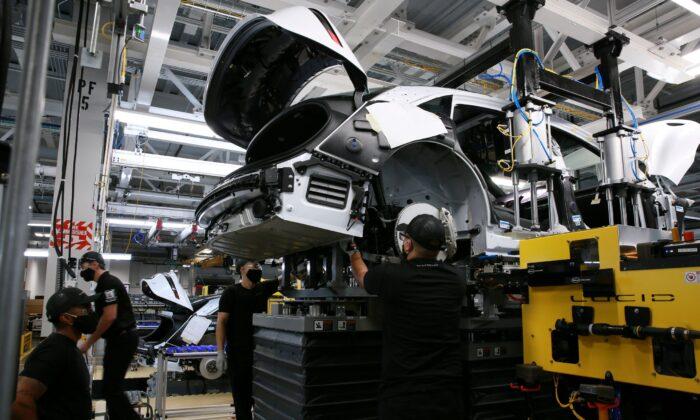WASHINGTON—Production at U.S. factories rebounded more than expected in October as the drag from Hurricane Ida faded and motor vehicle output picked up, but manufacturing continues to be constrained by shortages of raw materials and labor.
Manufacturing output surged 1.2 percent last month to its highest level since March 2019, after falling 0.7 percent in September, the Federal Reserve said on Tuesday. Economists polled by Reuters had forecast manufacturing production rising 0.7 percent.
Output increased 4.5 percent compared to October 2020. Manufacturing, which accounts for 12 percent of the U.S. economy, is being underpinned by businesses desperate to rebuild depleted inventories.
Spending shifted to goods from services over the course of the COVID-19 pandemic, straining global supply chains. Raw materials such semiconductors are in short supply. Workers are also scarce, hampering the delivery of materials to factories as well as the shipment of finished goods to markets.
Even with spending rotating back to services as coronavirus infections driven by the Delta variant subside, demand for goods remains strong.
Production at auto plants rebounded 11.0 percent last month after declining for two straight months. Excluding autos, manufacturing output rose 0.6 percent in October.
Consumer goods production rebounded 1.4 percent. But machinery production dropped 1.3 percent because of an ongoing strike at John Deere. Last month’s jump in manufacturing output combined with a 4.1 percent rebound in mining and a 1.2 percent rise in utilities to boost industrial production by 1.6 percent. That followed a 1.3 percent drop in September.
Capacity utilization for the manufacturing sector, a measure of how fully firms are using their resources, increased 0.9 percentage point in October to 76.7 percent, the highest since January 2019. Overall capacity use for the industrial sector rose to 76.4 percent from 75.2 percent in September. It is 3.2 percentage points below its 1972–2020 average.
Officials at the Fed tend to look at capacity use measures for signals of how much “slack” remains in the economy—how far growth has room to run before it becomes inflationary.





